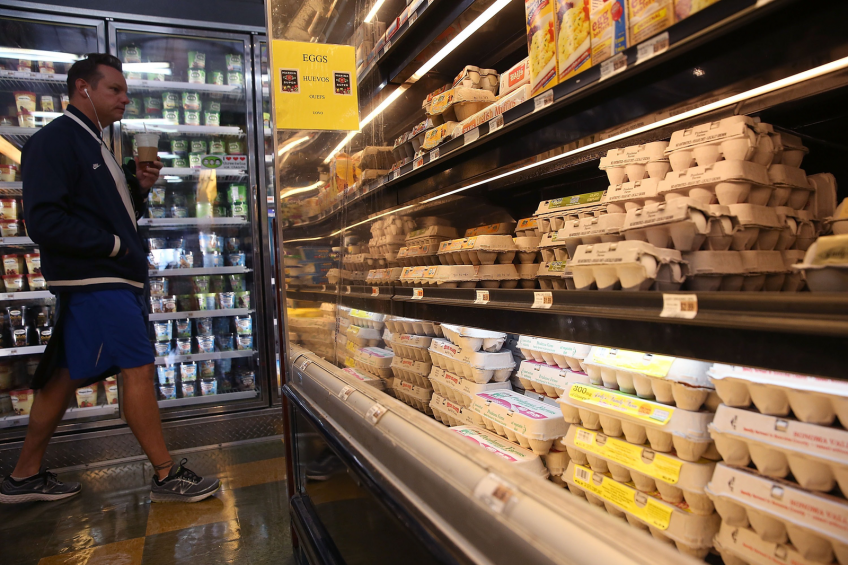US policy to destroy ‘safe’ poultry products petitioned

The increasing eggs prices as a result of the US outbreak of highly pathogenic avian influenza has prompted the food industry to closely examine a current policy that forces broiler chicken producers to destroy perfectly acceptable and safe shell eggs.
The National Chicken Council, Grocery Manufacturers Association and the Association for Dressings and Sauces have launched a petition to the FDA to reverse or modify this policy.
“In light of the strain the HPAI outbreak is putting on the nation’s egg supply, FDA should revisit the use of the surplus of affordable, quality eggs available in the United States for use by egg breakers and their customers, rather than seeking costly imports of foreign eggs,” the groups wrote.
Facing egg shortages
“Already faced with egg shortages, food producers and consumers might be hit even harder in their wallets as we head into the annual holiday baking season, unless FDA allows us to stop throwing away these eggs,” noted Ashley Peterson, NCC senior vice president of scientific and regulatory affairs.
When eggs are delivered from a breeding farm to a broiler hatchery, they are stored in a room kept at 18°C (65° F) before they are placed in incubators to be hatched. Research has shown this is the most ideal temperature to store these eggs prior to incubation – warmer temperatures would induce the incubation process too soon and colder temperatures comprise the viability of an eventual hatch. As a general rule, eggs maintained below 15.5°C (60° F) will not be hatched.
Surplus hatching eggs
Due to fluctuating market conditions, hatcheries in some instances have more eggs on hand than what they want to set in incubators to hatch and become chicks. These are known as “surplus” hatching eggs. Prior to 2010 when FDA implemented new rules, broiler producers (those raising chickens for meat) would be able to sell these surplus eggs to egg processors, known as “breakers,” to be pasteurised and used in egg products.
Egg products are defined by the US Department of Agriculture (USDA) as “eggs that are removed from their shells for processing.” The processing of egg products includes breaking eggs, filtering, mixing, stabilising, blending, pasteurising, cooling, freezing or drying, and packaging. This is done at USDA-inspected plants. Liquid, frozen, and dried egg products are widely used by food manufacturers and the foodservice industry and as ingredients in other foods, such as salad dressings, bread, cake mix, pasta, pancake mix, mayonnaise, ice cream, pie crusts, sauces, and many other everyday food products.
You may also be interested in:
US plan to suffocate poultry in AI outbreaks condemned
Animal rights campaigners in the US have condemned a move by the authorities in Washington to allow ventilation shutdown as a means of culling commercial poultry in the event of another avian influenza outbreak.
FDA rule on egg pasteurisation
In 2010, however, FDA issued a Final Rule saying that all eggs intended to be sent to breaking facilities for eventual pasteurisation must be kept at 7.2°C (45° F) within 36 hours after being laid. FDA never suggested these products are safer or explained what further health benefit is achieved from refrigeration prior to treatment. NCC fought the rule in 2010 on related grounds.
“Thus, the rule is contradictory in requiring refrigeration of eggs slated for pasteurisation, despite the fact that these eggs are destined to undergo treatment that will render them safe for human consumption,” the groups noted in the petition.
Cost of throwing away eggs
Broiler hatcheries are unable to determine those eggs that are surplus prior to setting eggs for incubation and as noted above cannot reasonably refrigerate eggs at 7.2°C (45° F) prior to setting. As a direct result, broiler producers have stopped selling surplus hatching eggs to egg processors and instead are forced to render or throw these eggs away, often at an additional cost. NCC estimates that the Final Rule resulted in the industry disposing of roughly 356 million eggs last year.
More than 33 million chickens have been culled since HPAI was first detected in December 2014, the overwhelming majority of them in the egg-laying industry. The nationwide layer hen population has consequently decreased by more than 25%, and it will take many months before these flocks can be repopulated. Industry experts estimate that the price of a dozen breaker eggs rose dramatically from $0.63 in late April to $2.15 in early June – an increase of 241%.
Strain on egg product industries
These price spikes and supply disruptions are putting tremendous strain on the shell and egg products industries, and the impact has already begun to trickle down and impose hardships on restaurants, food manufacturers and consumers. Companies reliant upon breaker eggs have begun stockpiling supplies before prices escalate further, and the US is currently importing pasteurised eggs from the Netherlands and Canada to meet demands.
“Basically what is happening is that food manufacturers and consumers are facing higher costs, we’re importing costly eggs from other countries, and we’re throwing away more than 350 million eggs right here on our doorstep,” Peterson said. “That’s about 1.7 billion grams of protein, or a roughly year’s supply of protein for about 94,000 people.”
Petition against refrigeration requirement
“By lifting or modifying the 36-hour refrigeration requirement for broiler hatcheries, FDA can increase the supply of breaker eggs, which will put downward pressure on prices and provide industries reliant upon breaker eggs with the relief they so desperately need,” the petition requests.
“Broiler producers thus have the potential to provide hundreds of millions of eggs to egg breakers during this period where eggs are in short supply due to the avian flu outbreak.”
Join 31,000+ subscribers
Subscribe to our newsletter to stay updated about all the need-to-know content in the poultry sector, three times a week. Beheer
Beheer








 WP Admin
WP Admin  Bewerk bericht
Bewerk bericht